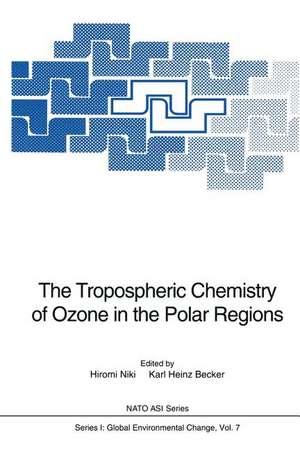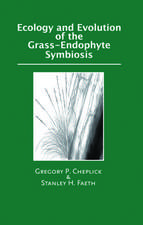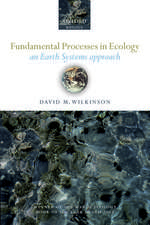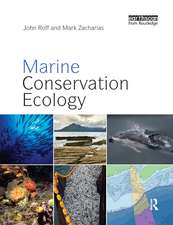The Tropospheric Chemistry of Ozone in the Polar Regions: Nato ASI Subseries I:, cartea 7
Editat de H. Niki, K.H. Beckeren Limba Engleză Paperback – 3 dec 2011
Din seria Nato ASI Subseries I:
- 15%
 Preț: 641.85 lei
Preț: 641.85 lei - 15%
 Preț: 649.87 lei
Preț: 649.87 lei - 15%
 Preț: 659.70 lei
Preț: 659.70 lei - 18%
 Preț: 957.75 lei
Preț: 957.75 lei - 18%
 Preț: 941.05 lei
Preț: 941.05 lei - 18%
 Preț: 959.36 lei
Preț: 959.36 lei - 15%
 Preț: 664.93 lei
Preț: 664.93 lei - 15%
 Preț: 655.27 lei
Preț: 655.27 lei - 15%
 Preț: 644.49 lei
Preț: 644.49 lei - 15%
 Preț: 639.08 lei
Preț: 639.08 lei - 18%
 Preț: 951.29 lei
Preț: 951.29 lei - 18%
 Preț: 952.57 lei
Preț: 952.57 lei - 15%
 Preț: 653.33 lei
Preț: 653.33 lei - 18%
 Preț: 958.56 lei
Preț: 958.56 lei - 15%
 Preț: 641.85 lei
Preț: 641.85 lei - 15%
 Preț: 650.86 lei
Preț: 650.86 lei - 18%
 Preț: 957.94 lei
Preț: 957.94 lei - 15%
 Preț: 649.54 lei
Preț: 649.54 lei - 15%
 Preț: 646.30 lei
Preț: 646.30 lei - 15%
 Preț: 648.89 lei
Preț: 648.89 lei - 15%
 Preț: 640.06 lei
Preț: 640.06 lei - 18%
 Preț: 950.21 lei
Preț: 950.21 lei - 15%
 Preț: 643.65 lei
Preț: 643.65 lei - 15%
 Preț: 649.54 lei
Preț: 649.54 lei - 15%
 Preț: 649.54 lei
Preț: 649.54 lei - 15%
 Preț: 641.71 lei
Preț: 641.71 lei - 15%
 Preț: 642.83 lei
Preț: 642.83 lei - 15%
 Preț: 639.59 lei
Preț: 639.59 lei - 15%
 Preț: 646.62 lei
Preț: 646.62 lei - 18%
 Preț: 962.49 lei
Preț: 962.49 lei - 15%
 Preț: 647.73 lei
Preț: 647.73 lei - 15%
 Preț: 641.71 lei
Preț: 641.71 lei - 18%
 Preț: 1231.47 lei
Preț: 1231.47 lei - 15%
 Preț: 649.22 lei
Preț: 649.22 lei - 15%
 Preț: 658.70 lei
Preț: 658.70 lei - 15%
 Preț: 641.71 lei
Preț: 641.71 lei - 15%
 Preț: 659.85 lei
Preț: 659.85 lei - 18%
 Preț: 1832.08 lei
Preț: 1832.08 lei - 18%
 Preț: 965.02 lei
Preț: 965.02 lei - 18%
 Preț: 955.25 lei
Preț: 955.25 lei - 18%
 Preț: 956.33 lei
Preț: 956.33 lei - 15%
 Preț: 650.55 lei
Preț: 650.55 lei - 18%
 Preț: 965.97 lei
Preț: 965.97 lei - 15%
 Preț: 652.64 lei
Preț: 652.64 lei - 15%
 Preț: 646.43 lei
Preț: 646.43 lei - 18%
 Preț: 1832.08 lei
Preț: 1832.08 lei - 18%
 Preț: 1225.62 lei
Preț: 1225.62 lei
Preț: 647.27 lei
Preț vechi: 761.49 lei
-15% Nou
Puncte Express: 971
Preț estimativ în valută:
123.89€ • 128.85$ • 103.82£
123.89€ • 128.85$ • 103.82£
Carte tipărită la comandă
Livrare economică 14-28 martie
Preluare comenzi: 021 569.72.76
Specificații
ISBN-13: 9783642782138
ISBN-10: 3642782132
Pagini: 436
Ilustrații: VII, 425 p.
Dimensiuni: 155 x 235 x 23 mm
Greutate: 0.61 kg
Ediția:Softcover reprint of the original 1st ed. 1993
Editura: Springer Berlin, Heidelberg
Colecția Springer
Seria Nato ASI Subseries I:
Locul publicării:Berlin, Heidelberg, Germany
ISBN-10: 3642782132
Pagini: 436
Ilustrații: VII, 425 p.
Dimensiuni: 155 x 235 x 23 mm
Greutate: 0.61 kg
Ediția:Softcover reprint of the original 1st ed. 1993
Editura: Springer Berlin, Heidelberg
Colecția Springer
Seria Nato ASI Subseries I:
Locul publicării:Berlin, Heidelberg, Germany
Public țintă
ResearchCuprins
Section I: Overview.- Features of Polar Regions Relevant to Tropospheric Ozone Chemistry.- Climatology of Arctic and Antarctic Tropospheric Ozone.- Polar Sunrise Studies.- Section II: Tropospheric Oxidants Modelling.- Meteorology and Transport of Air Masses in Arctic Regions.- Impact of Global NOx Sources on the Northern Latitudes.- Ozone Depletion During Polar Sunrise.- Section III: Field Studies.- Relationship Between Anthropogenic Nitrogen Oxides and Ozone Trends in the Arctic Troposphere.- Halocarbons in the Arctic and Antarctic Atmosphere.- Measurements of Hydrocarbons in Polar Maritime Air Masses.- Carbon Monoxide and Light Alkanes as Tropospheric Tracers of Anthropogenic Ozone.- Atmospheric Distribution of NO, O3, CO, and CH4 above the North Atlantic Based on the STRATOZ III Flight.- Spectroscopic Measurement of Bromine, Oxide, Ozone, and Nitrous Acid in Alert.- Ice Core Analysis in Arctic and Antarctic Regions.- Record of Atmospheric Oxidant from Polar Ice Cores Over the past 100,000 Years: Dream or Real Possibility?.- Section V: Marine Sources and Sinks.- Sources of Organobromines to the Arctic Atmosphere.- Hydrocarbons Emission from the Ocean.- Cycle of Tropospheric Phosgene.- Session VI: Laboratory Studies of Heterogeneous Reactions.- Chemical Interactions of Tropospheric Halogens on Snow/Ice.- Reactions of Halogens Species on Ice Surfaces.- Heterogeneous Reactions of Chlorine Compounds.- Liquid Phase Photochemistry in Relation to Tropospheric Chemistry of Halogens.- Session VII: Homogeneous Gas-phase Reactions.- Ozone HOx Photochemistry in the Troposphere — Latitudinal Dependence of Reaction Rates.- ClO + ClO ? Products: A Case Study in Halogen Monoxide Disproportionation and Recombination Reactions.- Thermal Stability of Peroxynitrates.- TemperatureDependence (256–296 K) of the Absorption Cross Sections of Bromoform in the Wavelength Range 285–360 nm.- Oxidation of Organic Sulfur Compounds.- Halogen and Sulfur Reactions Relevant to Polar Chemistry.- Reactions of BrO Radicals Relevant to Polar Chemistry.- Comparative Assessment of the Role of Iodine Photochemistry in Tropospheric Ozone Depletion.

















